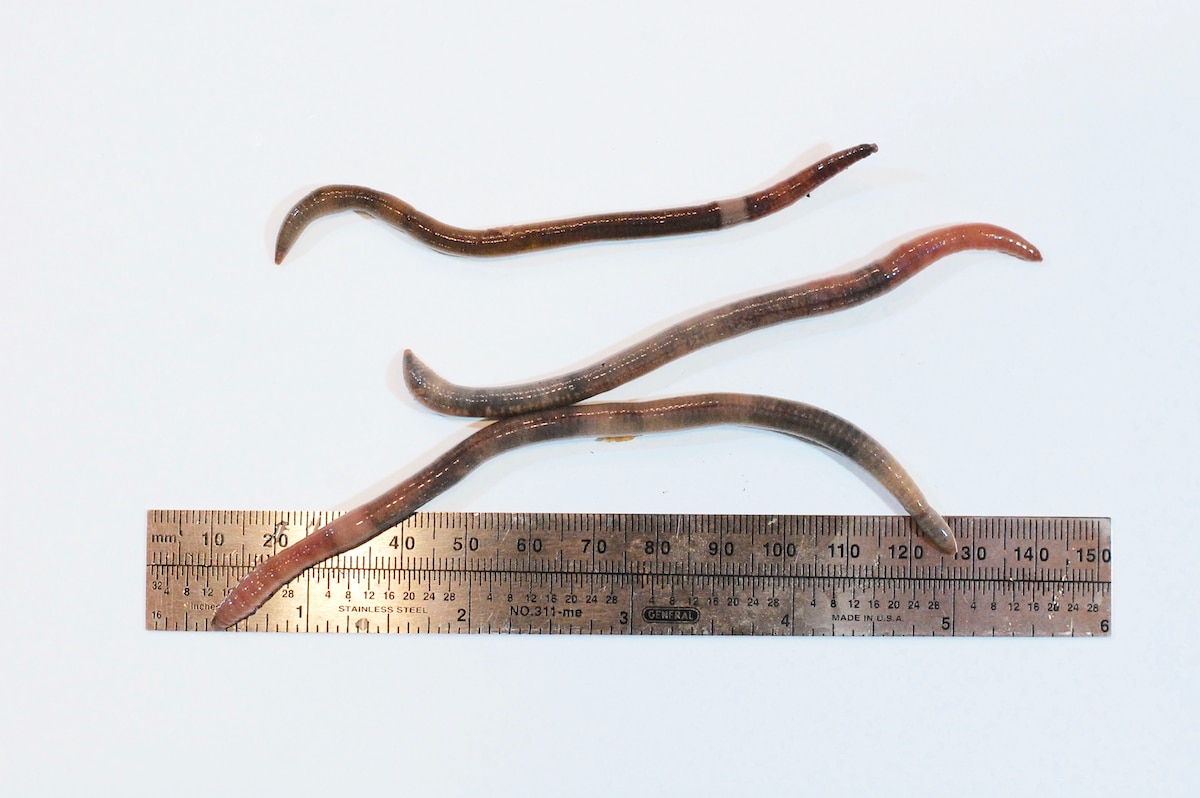Products You May Like
What grows up to eight inches long, is dark with a white band, can leap a foot in the air and is the latest threat to California’s forest ecosystems?
The answer is the Asian jumping worm (Amynthas agrestis), a uniquely mobile species of earthworm with an impressive appetite that was sighted in the state for the first time in recent months.
“These earthworms are extremely active, aggressive, and have voracious appetites,” the California Department of Food and Agriculture (CDFA) said in a report. “True to their name, they jump (known to jump off the ground or out of a bait can) and thrash immediately when handled behaving more like a threatened snake than a worm, sometimes even breaking and shedding their tail when caught.”
A specimen was spotted at a nursery in Napa County in July of 2021. While no further specimens have been reported in California, the CDFA said it was likely that the species would spread widely throughout the state.
Native to Japan and the Korean Peninsula, the earthworms are considered an invasive species in the U.S. because they did not evolve alongside other species in the country and can, in fact, have a negative impact on them, the U.S. Department of Agriculture’s Forest Service explained. This is because the species – also known as Alabama jumpers, Jersey wrigglers, wood eel, crazy worms, snake worms and crazy snake worms – devours the fallen leaves that cover the forest floor and create the top layer of its soil. While this is standard fare for earthworms, what is not standard is the speed at which the jumping worms devour their leafy food. They can consume a forest’s entire leaf layer in two to five years, according to CDFA.
“Soil is the foundation of life – and Asian jumping worms change it,” Forest Service researcher Mac Callaham said in a press release. “In fact, earthworms can have such huge impacts that they’re able to actually reengineer the ecosystems around them.”
They replace the leaf-layer soil with a soil composed of worm castings that does not provide a home for understory plants and is dominated by bacteria rather than fungi, according to CDFA. This accelerates the conversion of leaf debris to minerals and means that plants do not have as many organic nutrients to consume. Because the forests now have fewer plants and poorer soil, they are more at risk from erosion and disease. This is especially a problem for hardwood forests that contain maple, basswood, red oak, poplar or birch.
“Some northern hardwood forests that once had a lush understory are reported to now have only a single species of native herb and virtually no tree seedlings,” CDFA said.
The jumping worms first arrived in the U.S. in the early 1900s via the soil in potted plants, according to the Forest Service. However, they have really begun to make their presence known in forests in recent years.
They were spotted in Wisconsin and across New England in 2013, The Guardian reported. They have since moved westward to dozens of states.
The worms can travel via mulch, potting mixes or potted plants, according to the Forest Service. Their cocoons can end up bunched together because of leaf blowing or raking, and they can also be spread when cities collect leaf material and return it to residents as compost.
The Cornell Cooperative Extension has outlined some ways that individuals can help control their spread, including:
- Not using them intentionally for bait or gardening.
- Pouring a mixture containing a gallon of water and one-third cup of ground yellow mustard on to your soil, which will force worms to the surface for removal.
- Covering damp soil in the late spring or summer with transparent polyethylene for two to three weeks or until the soil temperature reaches 104 degrees Fahrenheit for a minimum of three days.
- Picking them out of the soil and putting them in a bag, then throwing the bag away or leaving the bag in the sun for at least 10 minutes and then tossing it.
